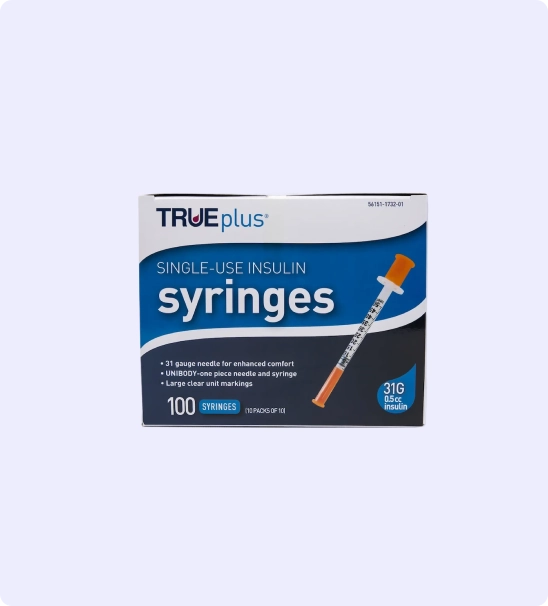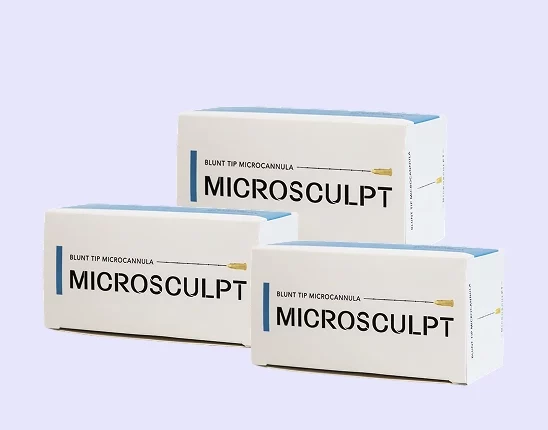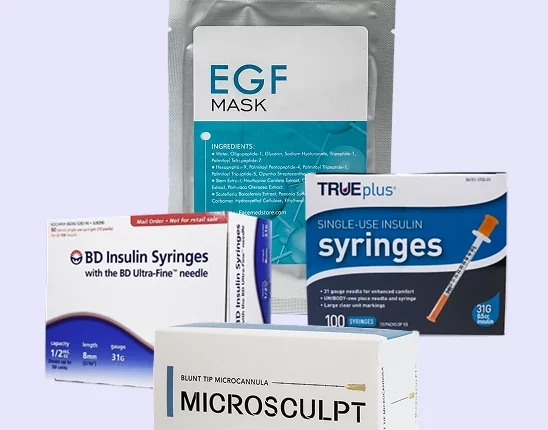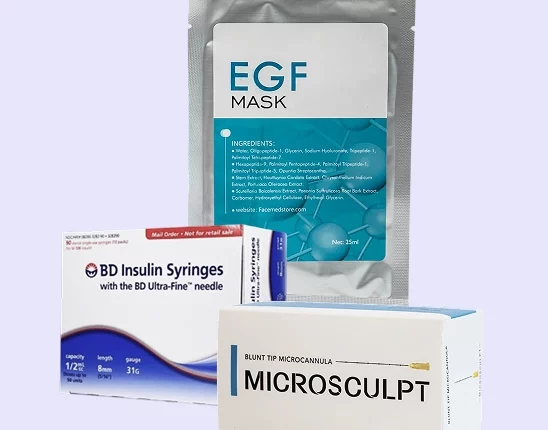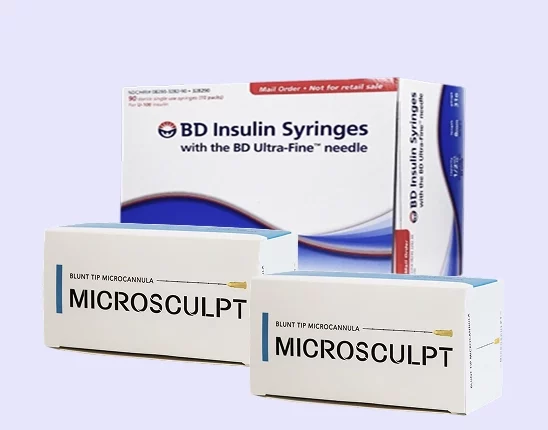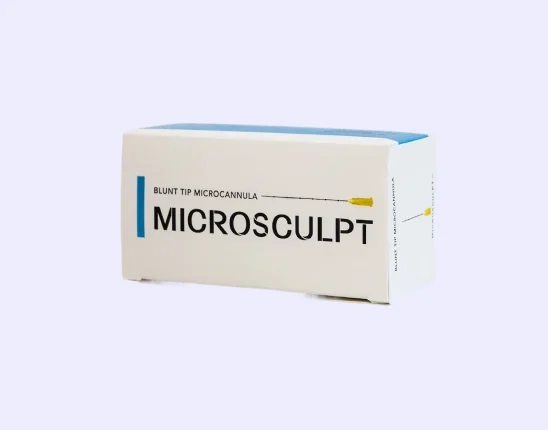Injections can be a painful and unpleasant experience. Factors like injection speed and needle length can affect your experience. But even after the needle is long gone, you might still feel some pain lingering in the injection site. This post-injection pain can last for a few days, and you might notice soreness, reddish skin, and swelling.
These are all normal effects of certain types of injections. Aside from your body reacting to the injected substance, the pain can be attributed to your body recovering from the damage done by the needle. If you’re interested to know how long post-injection pain lasts, here’s what you need to know about its causes, symptoms, and possible alternatives if you want to avoid the recovery pain when you undergo cosmetic procedures like dermal fillers.
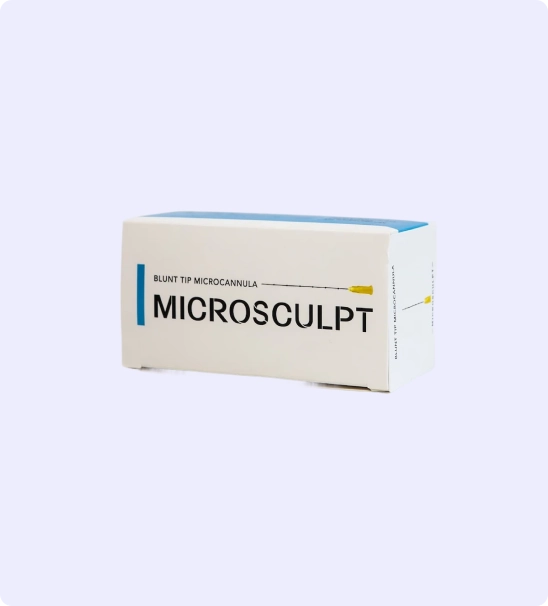
Injections Your Patients Will Love! Code “20OFF” Takes 20% off Your First Order!
Microcannulas are a tool that every great injector must master. Patients want quick results with no downtime. Our microcannulas are high quality and a fraction of the price of our competitors!
You can create an account here.
What to Know About Post-Injection Pain
It’s normal to feel pain in the injection site after treatment. It doesn’t necessarily mean that the injected medicine is working, but is more of an effect of using injections.
How Long Does Post-Injection Pain Last?
Post-injection pain can vary between patients and can start to fade within hours to days after the injection. It can become noticeable a few hours after the injection, though some may feel post-injection pain immediately after the procedure.
The level of pain can also vary: some can easily ignore the pain, while others may need ice packs and over-the-counter painkillers before they can focus on their everyday tasks. After a few days, this should subside and you should be able to resume your normal activities without any pain.
Why It’s Painful
There are multiple reasons that explain post-injection pain. One or more of these reasons may apply to your case:
- Lingering pain from the injection. Immediately after your injection, you might feel pain that immediately goes away. This is due to a number of factors during the injection, including:
- Injection speed
- Type of injection
- Needle length, size, and sharpness
- Consistency and temperature of the medicine injected
- Intramuscular injection. This is a type of injection that goes past the skin layer all the way down to your muscles, where most of the biggest blood vessels are. This is often used for the intravascular delivery of drugs and vaccines. Your muscles are made up of fibers, so when a needle punctures the muscle, it breaks muscle fibers and creates muscle damage, which can cause pain during the injection. After the injection, your body releases a response that causes post-injection inflammation because of these broken muscle fibers. While your muscle fibers repair themselves, you can experience post-injection inflammation that can trigger pain receptors.
- Immune system response. If you were vaccinated, the pain is your immune system’s response to the vaccine. Vaccines inject substances that train your white blood cells on how to fight certain diseases. Your body responds by creating antibodies, which can cause post-injection inflammation in the process.
- Blown veins. During an intravenous injection, your doctor or nurse may rupture a vein and cause it to leak. This is treatable by applying pressure and cleaning the area to prevent infection. Afterward, however, you may experience swelling, bruising, and pain in the area. Pain goes away in a day or two, but bruising can take up to two weeks to lighten.
- Broken tissue. Depending on the depth of the injection, the needle may have broken subcutaneous tissues and will need to repair itself, though the broken tissue can trigger pain receptors and cause acute inflammation.
Common Symptoms
Unless you’re experiencing signs of infection as mentioned above or have an allergic reaction to your medicine, there is no need to seek medical treatment for post-injection pains. These potential side effects are usually limited to the injection site are normal and should subside in a few days:
- Swelling
- Redness, itching, mild skin irritation, and rashes
- Warmth – this is your body’s post-injection inflammation response to kill any bacteria in the injection site. This can be treated with medication for inflammation.
- Soreness when the injection site is touched. If you get an injection on your arm, you may experience chronic pain or find it difficult to move your entire arm.
How to Treat Post-Injection Pain
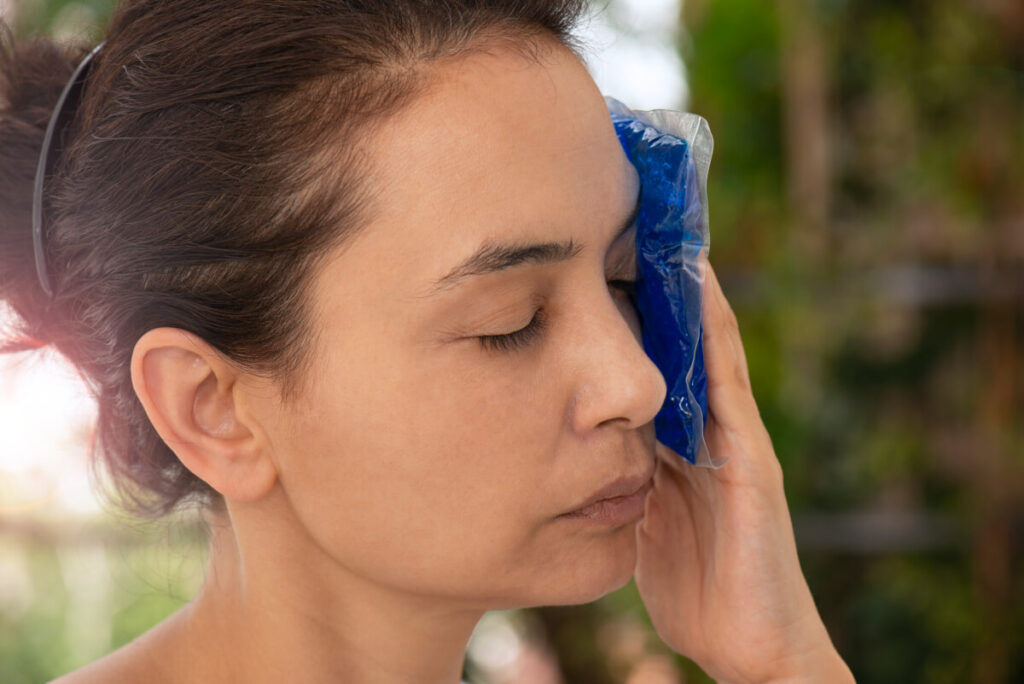
Post-injection pain can go away on its own without any treatment. Mild pain that does not prevent you from doing everyday tasks will go away quickly. If you feel uncomfortable or find that you cannot ignore the pain when performing daily life activities and tasks, here are a few short-term solutions for pain relief:
- Cold pack
- Over-the-counter painkillers and other medication for inflammation
- Prescription pain reliever and antibiotics – if pain medications aren’t working, your doctor or a pain management specialist may prescribe painkillers. They may also prescribe antibiotics to reduce the chance of bacterial infection.
When to Call Your Doctor
If pain in the injection site doesn’t start to fade after three days and you experience the following symptoms, contact your healthcare provider:
- Fever
- Intense pain in the injection site that is getting worse or not fading
- Blistering, itching, skin irritation, or rashes at the injection site
- Muscle aches
- Nausea, headache, and dizziness
If you are experiencing these, there may be a risk of infection and you might need immediate care. If you find yourself developing hives and experience shortness of breath, seek emergency treatment as this could be an allergic reaction to the medicine.
Microcannulas: A Less Painful Alternative to Injections
Given an experience of severe pain from injections and possible post-injection pain, people who can benefit from dermal fillers may be discouraged from getting this treatment (or any type of treatment that involves injections) due to a painful injection experience.
Fortunately, microcannulas are becoming a more popular choice for medical professionals providing filler injections. Not only do microcannulas reduce the pain patients feel during and after a procedure, but can also help professionals provide better results.
How Microcannulas Work
Microcannulas are thin, flexible tubes with a blunt end used at the end of a syringe instead of sharp, non-bendable hypodermic needles. Microcannulas come in different lengths and gauges, providing medical staff with different levels of reach.
In a typical filler procedure using hypodermic needles, a health care professional will inject consecutive injections in one area to fill in the necessary places. This can cause a significant amount of pain during the procedure and after.
With a microcannula, the doctor will use a sharp needle to create one entry point since microcannulas are blunt and cannot penetrate your skin on its own. However, this single injection point will be enough for your doctor to fill in all nearby areas, reducing the pain you experience during and after the procedure. Microcannulas’ flexibility allows the doctor to direct the fillers into different areas of the skin without breaking or damaging subcutaneous tissues underneath the skin.
Post-Injection Pain from Microcannulas
If it’s post-injection pain you’re worried about, microcannulas are a good solution. Microcannulas provide additional advantages during the procedure that can affect the injection site post-treatment.
- Added precision. A microcannula’s flexibility allows doctors to direct fillers accurately. Not only does this provide better, more natural-looking results, but it can prevent tearing at tissue and triggering your body’s natural inflammatory response.
- Only one entry point. Rather than having consecutive injections to treat one area, microcannulas only need one entry point.
- Avoid blown veins. Needles can puncture superficial blood vessels in your skin. The blunt tip of a microcannula can avoid this and push the blood vessel aside.
- Reduces downtime. Sharp needles can trigger bruising and swelling. Microcannulas have a blunt tip that prevents these, causes less trauma, prevents post-injection inflammation and reduces the need for downtime after the procedure.
Get Microcannulas for Your Patients Today
-
 Microcannula Multi-Gauge Precision Set
Microcannula Multi-Gauge Precision Set -
 Microcannula Complete Injection System
Microcannula Complete Injection System -
 Microcannula Size Progression Training Kit
Microcannula Size Progression Training Kit -
 Microcannula Professional Starter Kit
Microcannula Professional Starter Kit -
 Microcannula Volume Practice Pack
Microcannula Volume Practice Pack -
 23 gauge 50 mm (2 inch) Microcannulas
23 gauge 50 mm (2 inch) Microcannulas -
 22 Gauge 100 mm (4 inch) Microcannulas.
22 Gauge 100 mm (4 inch) Microcannulas. -
 27 Gauge 38 mm (1.5 inch) Microcannulas
27 Gauge 38 mm (1.5 inch) Microcannulas -
 25 Gauge 38 mm (1.5 inch) Microcannulas
25 Gauge 38 mm (1.5 inch) Microcannulas
Injections can be painful for a few seconds, but post-injection pain can bother patients for days after their treatment. This can be enough to dissuade patients that can benefit from dermal fillers from getting any type of treatment done. But if doctors could provide an alternative solution that offers a less painful experience that results in little to no recovery time, then providing microcannulas for dermal filler procedures is definitely the way to go.
FACE Med Store supplies medical tools to cosmetic and wellness practices. Our competitively-priced products give our partners the advantage to improve business operations, increase profitability, and provide their customers with a comfortable experience – all without sacrificing product quality and effectiveness.
Give your patients a better experience with their dermal filler procedures. Check out our range of microcannulas for sale at our online store today.
